Employee productivity has always gone hand-in-hand with company success. Companies with engaged employees perform 202% better than those with disengaged teams. But how do you actually create and foster a productive workplace with engaged employees?
2023 has brought its own set of challenges and opportunities. The rise of remote working increased digital integration, and the need to ensure employee well-being are just a few of the evolving considerations that organizations face. These shifts can be seen as hurdles, or, with the right perspective, avenues for innovation and growth.
For businesses of all sizes and individuals across all roles, navigating business effectively means understanding and harnessing employee productivity strategies tailored for our times. Let’s explore these together.
1. Embrace Remote and Hybrid Work Models
The pandemic, in reshaping so many aspects of our lives, has also triggered a seismic shift in the working world: the rise of remote work. What was once a perk offered by a handful of companies has now become “the new normal,” as businesses worldwide have recognized the need for flexibility in their models. A majority of employees also state that they are more productive when they work from home.
Enter the hybrid work model, a blend that offers employees the flexibility of remote work while still retaining the benefits of in-person collaboration. There’s a growing consensus that this model can boost productivity by catering to employee work preferences, promoting a healthier work-life balance, and limiting the stress that comes along with commuting.
But how do you ensure employees really stay productive while working from home? We’ve outlined a few steps to take to make the transition as smooth as possible:
- Set Clear Expectations: Whether it’s about deliverables, working hours, or communication norms, clarity is crucial.
- Provide the Right Tools: Your team can’t be productive without the right tools. Make sure employees are equipped with what they need to work effectively from any location.
- Prioritize Communication: Regular check-ins, team meetings, and one-on-one sessions become even more important when you are not working from the same physical location.
- Build a Community: Virtual team-building sessions, online training workshops, or even simple digital coffee breaks can keep the team spirit alive.
In embracing the remote and hybrid work models, businesses aren’t just adapting to the present, but future-proofing themselves.

2. Invest in Digital Tools and Platforms
As we touched on, digital tools enable team members to work efficiently even when they are miles apart. But these tools also streamline processes and reduce manual tasks. Whether it’s project management, communication, or data analytics, the right digital platform can markedly improve employee productivity.
This year, certain types of tools have risen to the forefront, including:
- Collaboration platforms that offer video conferencing and document sharing.
- Time management tools that incorporate AI to suggest optimal schedules.
- Advanced CRM systems that integrate with other software, making customer relationship management easier.
It’s worth noting that the tool itself is only as good as your understanding of it. It’s important to train your employees on new software and give them time to incorporate it into their daily processes.
3. Cultivate a Strong Company Culture
“Company culture” can often feel like an abstract buzzword that falls flat when interrogated. How do you make sure you’re building a positive workplace that is unified by a set of values and nurtures employee engagement and motivation?
Here are some concrete tips for building a vibrant company culture:
- Prioritize open communication. Your employees will be happier and more productive when they know their voices are heard.
- Boost motivation by recognizing achievements, big or small.
- Emphasize and support employee well-being/mental health
- Foster inclusivity by celebrating diversity in all its forms.
Leaders set the tone. By embodying the values and ethos of the company, leaders can inspire a sense of purpose and ultimately drive employee productivity.
4. Provide Regular Check-ins, Feedback, and Transparency
Regular check-ins are even more important with a newly-remote workforce. They ensure that everyone stays aligned and bolster a sense of unity.
These check-ins should include feedback. It’s important to celebrate employee strengths and offer constructive points that encourage rather than deflate. The feedback you give shouldn’t just be about making simple improvements, but about nurturing potential. You want to make sure you are always providing team members with a clear path for their growth within the organization.


5. Ongoing Training and Development
Speaking of charting a path for growth, another way to boost employee productivity is through training and development. As industries advance, the skill sets they demand evolve. Continuous skill development ensures your team is not just catching up but setting the pace.
Start by understanding your team’s needs. Tailor-make programs that are relevant, engaging, and interactive. Blend traditional learning with digital platforms, sprinkle in hands-on workshops, and don’t shy away from bringing in external experts for niche subjects.
As you plan these initiatives, know that one-off training sessions aren’t enough. Igniting a genuine passion for learning within your organization requires you to celebrate milestones, encourage knowledge-sharing sessions, and make resources easily accessible.
6. Whatever You Do, Don’t Micromanage
Just the term “micromanagement” is apt to send shivers down the spine of many employees. But why is this approach, characterized by excessive control and attention to detail, such a detriment to employee productivity?
Micromanagement is damaging in part because it is directly opposed to autonomy. When employees constantly feel watched or second-guessed, it can significantly hamper their confidence and creativity. In contrast, autonomy allows them to take ownership, encouraging both responsibility and innovation.
Micromanagement can also decrease employee productivity by eroding trust. Employees might feel their abilities are constantly under scrutiny, which can lead to decreased morale, job satisfaction, and productivity. According to a survey conducted by Trinity Solutions and cited by Forbes, 71% of respondents stated that micromanagement negatively impacted their job performance.
Finally, when leaders focus too heavily on minor details, both their and their employees’ time is diverted from higher-level strategic thinking and more pressing tasks. Both employee productivity and management productivity take a hit.
To fight against the urge to micromanage, leaders should:
- Focus on the bigger picture and trust their team with the details.
- Encourage open communication, allowing employees to voice concerns without fear.
- Provide training and development to equip managers with effective leadership skills.
Boost Employee Productivity into 2024
While change is constant, employee productivity will always be one of the biggest factors in your company’s success. The strategies we’ve outlined will help you increase productivity, stay resilient, and thrive through the rest of the year and into 2024.
And if you’re looking for more ways to strengthen your team with high-impact development or coaching, we’re always here to help. Reach out to get your most burning questions about employee retention, engagement, or advancement answered!


